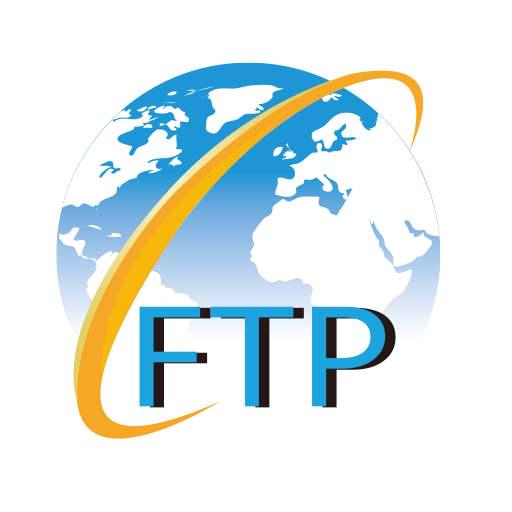FTP-FTPS-SFTP, Why Enterprise Is Still Searching for the Alternative of FTP?
June 10, 2020FTP traditionally has been the most common way to exchange files over the internet for years. FTP-FTPS-SFTP seems to be an update of FTP, but is this real? Or as everyone has said, that the progress of new technologies has made FTP obsolete?
If you are currently using FTP and looking for an alternative that provides visibility, control, and automation while improving security and manageability – this article takes a deep dive into what FTP is, its attributes and gives you the info you need to consider replacing FTP with a better file transfer solution.
File Transfer Protocol (FTP) is a method of transferring data files from one computer to another over a network. As one of the original programs for accessing the information on the internet, it was developed in 1971 as part of the U.S. Department of Defense’s ARPANET protocols and thus predates both the TCP and Internet Protocol (IP).

FTPS and SFTP
FTPS and SFTP are two separate protocols used as secure alternatives to traditional FTP. Often mistaken for each other, these are two very distinct protocols with different pros and cons: FTPS (also known as FTP Secure, FTP-ES, FTP-SSL) is an extension to the commonly used File Transfer Protocol (FTP) that adds support for the Transport Layer Security (TLS) and the Secure Sockets Layer (SSL) cryptographic protocols. SFTP (SSH File Transfer Protocol) is a secure alternative to FTP and is often mistakenly used to specify some kind of Secure FTP, by which people most often mean FTPS. SFTP is a binary protocol in which all commands are packed to binary messages and sent to the server, which replies with binary reply packets.
Why Replace FTP?
Since FTP is typically used to solve a single problem or meet a specific application requirement, it usually results in multiple discrete deployments with no central management and control — leading to many business challenges for enterprises, which is not visible at the surface. Here are some driving factors for replacing FTP:
Security
There are a number of risks associated with using native FTP such as having FTP port open in firewalls and a lack of encryption. Exchanging information without the necessary security features could lead organizations to face massive fines in the event of a breach or a public relations disaster.
Lack of Visibility
When sending files via FTP, the sender has no way to verify whether the recipient received or downloaded the file or not. Also, since FTP doesn’t maintain an audit trail of system actions such as who downloaded or transferred files, organizations don’t have detailed proof of user actions.
Storage Overhead
FTP doesn't allow sender to automatically expire or delete files. The file will be deleted until the IT administrator delete it, consuming significant storage space and incurring unnecessary costs.
Cumbersome Workflow
It is difficult and complexed to manage FTP, if you want to send the file to a new contact, you need to set a new FTP account. Because the users have no right to access the FTP server, thus they need to repy on the help of the IT administrator to create the new accounts, retrieve forgotten passwords and remove accounts for those who no longer require access.
Alternative to FTP

As the enterprise-level file transfer expert, Raysync replaces the FTP server via the secure file sharing platform, and builds the ultra-high-speed transfer engine to realize all internal and external file transfer management of the enterprise and fast and safe file distribution worldwide. Some of Raysync's differentiating features include:
Easy to Management
The deployment process will be troublesome and hard to manage if there are many files to be transferred. Raysync Transmission supports different types of protocol, based on the self-developed transfer engine, Raysync can transfer the large files and the vast amount of small files at maximum speed. It is convenience for organization to manage the whole transfer process from a central control board.
Security and Permission
Raysync helps organizations remain compliant with strict regulations by providing security features to monitor user actions, regulate access, and secure corporate data. All data in flight and at rest are protected with encryption and antivirus scanning.
High-performance Transfer
Whether it is the current TB-level big file transfer across borders or massive small file transfer, these are all routine for enterprises nowadays. FTP simply cannot meet the needs of the fast-growing big data era. Raysync Transmission is a high-speed transfer engine based on UDP research and development. Compared with FTP, the transfer speed is 100 times higher, and the bandwidth utilization rate reaches 96%. It can easily cope with the high-speed transfer demand of enterprise-level files.
Seamless Integration
As far as deployment and integration are concerned, Raysync Transmission provides the most flexible FTP alternative. Raysync Proxy supports seamless integration of various popular softwares such as FTP/Http/ssh/SCP/Rsync, etc. Raysync Transmission can easily replace the old FTP server, quickly complete deployment within 30 minutes, realize high-speed and safe access to collaborative data within and between enterprises in the global position, reduce the high cost of R&D and design, and save the time needed for deploying and monitoring important file transfer.
Raysync Proxy Acceleration can be integrated through the standard Proxy protocol. The original application system of the enterprise does not need secondary development. Technical departments do not need to use multiple user names and passwords to establish personal FTP connections. Users only need to know the e-mail address of the recipient to send data at high speed and safely. Raysync Proxy can be run as a process alone, with extremely low resource consumption, CPU consumption of less than 20% at 100Mbps data throughput, and memory consumption of management structure of single connection of less than 30KB.
You might also like

Raysync News
May 15, 2020We believe that the file transfer speed is only the most basic demand of an enterprise, and the core concerns of the enterprise is the stable and safe data transferring.

Raysync News
December 22, 2023As the volume of healthcare data grows, the transmission of healthcare data has become a major challenge for the healthcare industry. This article focuses on the knowledge of medical data transmission.
![[2024] Most Reliable FTP Alternative Upgrade Solution](http://images.ctfassets.net/iz0mtfla8bmk/3Zu2Xoy5oUf4jQUkY692Mc/4200bdf5715b863d6b63fab31a3e8118/2024-s_Most_Reliable_FTP_Alternative_Upgrade_Solution.png)
Raysync News
April 2, 2024Traditional FTP (File Transfer Protocol) has struggled to meet the demands of modern organizations for efficient, secure and reliable file transfers. To meet these challenges, more and more enterprises are seeking alternative upgrade solutions to FTP.